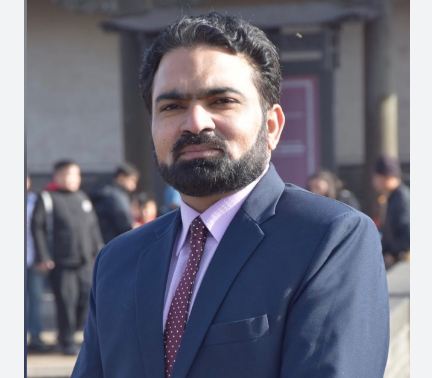Abdul Rashid Shakir
A highly-acclaimed maxim, ‘A healthy mind lies in a healthy body,’ aptly underscores the need for a well-equipped and developed healthcare system in a society. A healthy society boasts of skilled and productive human resource which becomes its valuable asset instead of debilitating liability. Therefore, all pro-development states and societies invest liberally not only in antenatal and prenatal care but also in primary healthcare, universal health coverage, malnutrition and stunting.
Need for a state-of-the-art and reliable healthcare system for Punjab, with a huge population of around 128 million, can hardly be underestimated because if maintained well medically, this great pool of human resources can truly be a robust driving force for economic development and social growth, otherwise can easily push everything into an abysmal pit. Cognisant of its significance, the Punjab government, under the inspiring leadership of Chief Minister Maryam Nawaz Sharif, is investing heavily in the healthcare sector across all 36 districts of the province.
In a very short span of two months, the Punjab government has initiated seven mega healthcare projects worth Rs147 billion, covering all crucial sub-sectors including timely transport of critical patients to major hospitals, free medical tests and screening, free treatment and availability of free medicines. Oncology, cardiology, gynaecology and paediatrics are among the government’s top priority treatment sectors. The government is revamping and upgrading 2500 Basic Health Units (BHUs), 300 Rural Health Centres (RHCs) and major public sector hospitals across Punjab, in order to provide best healthcare facilities to its people. It has also launched two revolutionary initiatives: ‘Field Hospital’ and ‘Clinic-on-Wheels’ to provide best medical treatment facilities at the doorsteps of people living in remote rural and urban areas of the province.
In order to ensure availability of doctors in every healthcare unit across Punjab, the government has started ‘A Doctor in Every Health Facility’ program. Free home delivery of medicines across Punjab for the patients of cancer, cardiology, TB and hepatitis is another feather in the cap of Punjab government. Additionally, the Chief Minister Punjab also intends to introduce a free insulin Program in the province.
On top of that all, the Nawaz Sharif Institute of Cardiology Sargodha and Nawaz Sharif Cancer Hospital Lahore are going to be two other futuristic healthcare facilities in the province, expected to start operations within a year. The Chief Minister has further resolved to provide best of the best medical facilities including cancer and cardiology treatment units in all big cities of the Punjab, besides establishing three highly developed medical cities across Punjab during next five years.
For the first time in the history of not only Punjab but of the entire country, Air Ambulance Service and Motorway Ambulance Service are on the cards, expected to start in June and December this year respectively. The government has also added 100 more ambulances to the existing ambulance fleet of 500, dedicated to provide free pick and drop service to the pregnant women of rural areas. The TAT (Turn Around Time) of an ambulance will be improved when complimented by another visionary project of the chief minister: ‘Sarkein Bahal, Punjab Khushhal’ (Roads Revamped, Prosperous Punjab), under which around 600 major roads in the province are being rehabilitated and revamped to ensure rapid transportation and easy mobility of patients to and from healthcare facilities in the province.
Another flagship program of the Punjab government,’Suthra Punjab (Clean Punjab)’ is a great initiative, not only to provide healthy living conditions to the people but also to protect the environment and reduce undue pressure on the healthcare facilities.
Malnutrition and stunting in kids is a major stumbling block in the way of producing healthy and productive human resources. The government, in order to address this challenge, is planning to start a program to provide nutritious flavoured milk packs to the primary students of public sector schools. It would not only spur their cognitive abilities by providing them vital nutrients but would also shape their intellectual and physical abilities to make them fit and healthy for challenging assignments in future. Such a healthy and productive human resource proves to be a real asset of its society by contributing productively to its socio-economic development.
In order to ensure better and constructive engagement of such a healthy and young human resource, the government of Punjab has introduced another remarkable program:’Khelta Punjab (Playing Punjab),’ under which the first ‘Chief Minister Punjab Pink Games 2024’ have recently concluded, in which more than 1300 female players of around 16 universities in Lahore participated. The Chief Minister vowed to extend the sphere of ‘Pink Games’ to other parts of the province by providing sporting infrastructure for girls at the grassroots level. She has also directed the authorities concerned to start Punjab League soon in order to engage in a constructive way more than one million youth across Punjab.
Major takeaway of the entire discussion above is that Chief Minister Maryam Nawaz Sharif is fully focused on providing top notch healthcare facilities in both urban and rural areas of the Punjab, besides fostering a culture of constructive engagement of youth in order to raise such a pool of quality human resource that would contribute voluminously to the socio-economic development of the province.

















